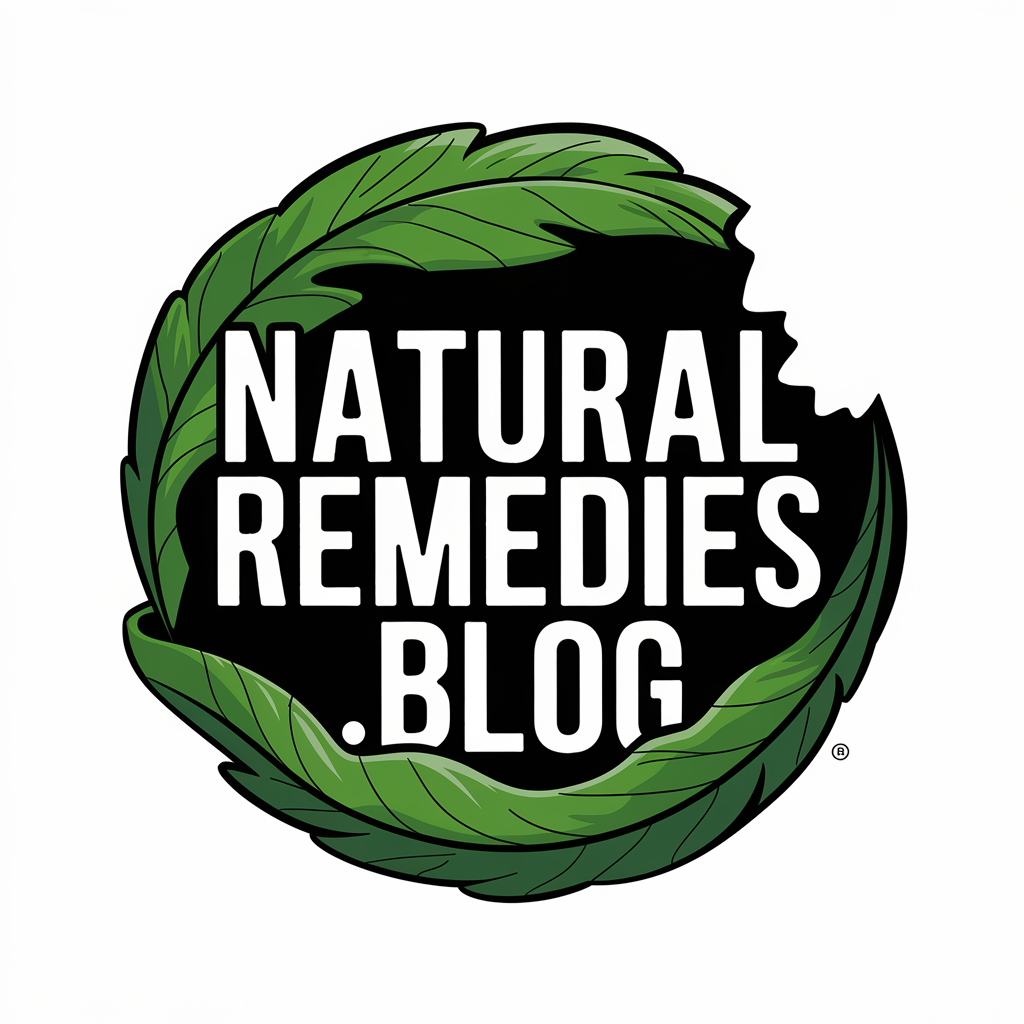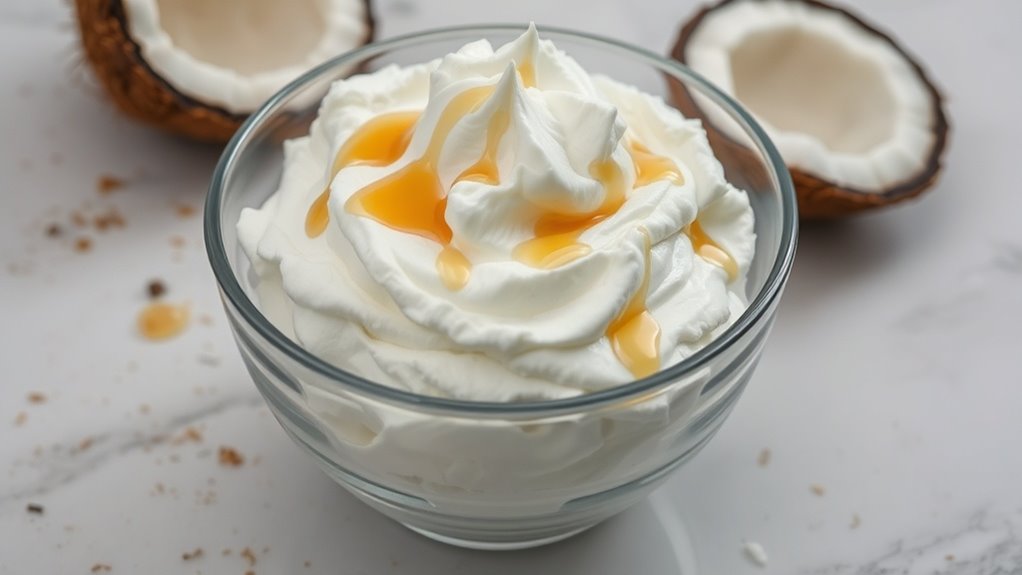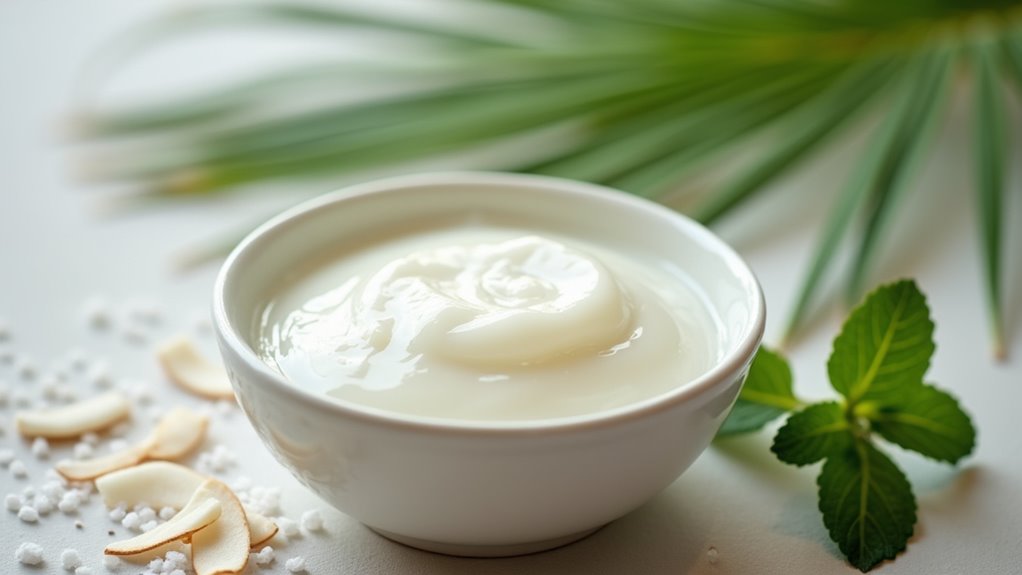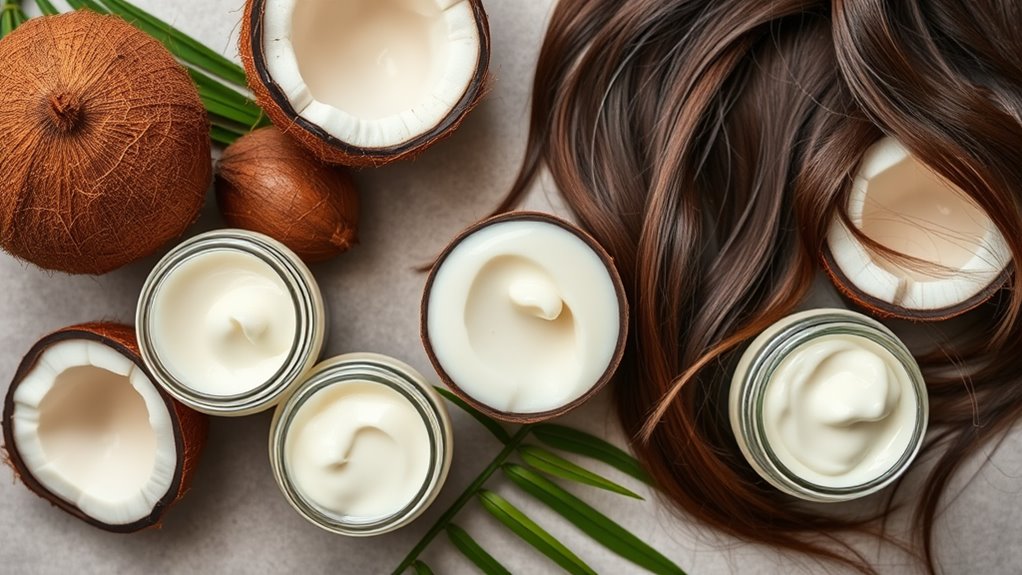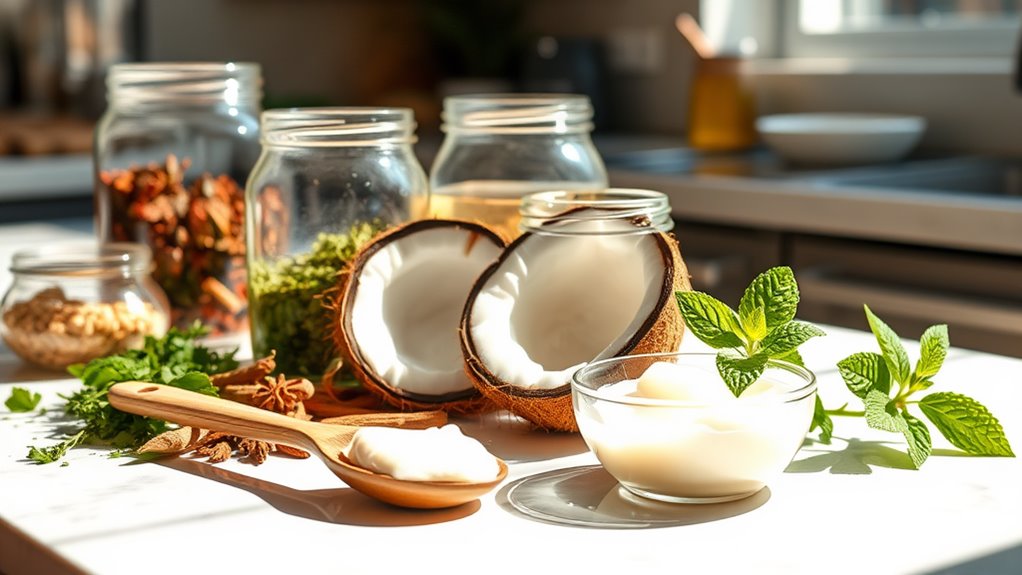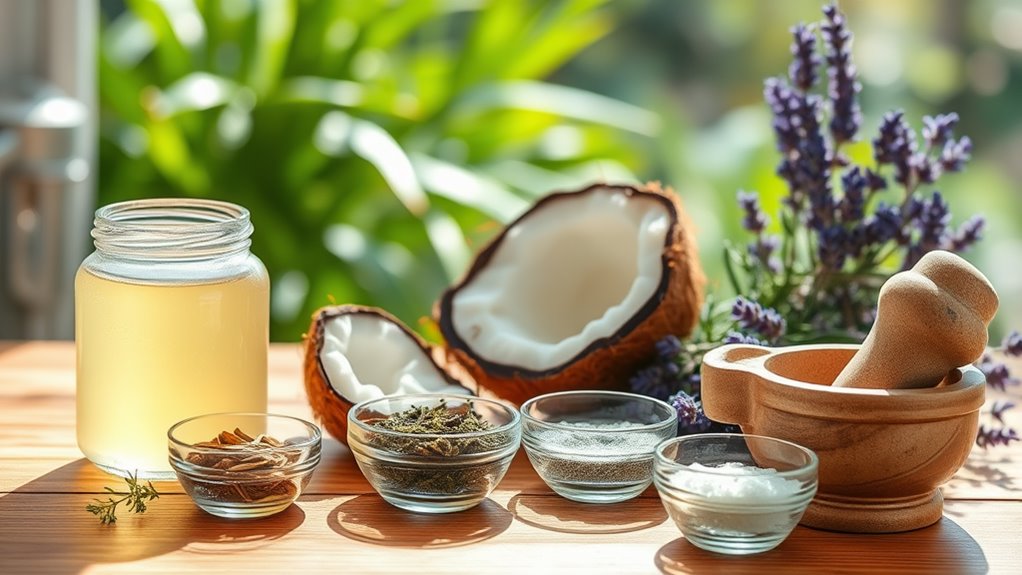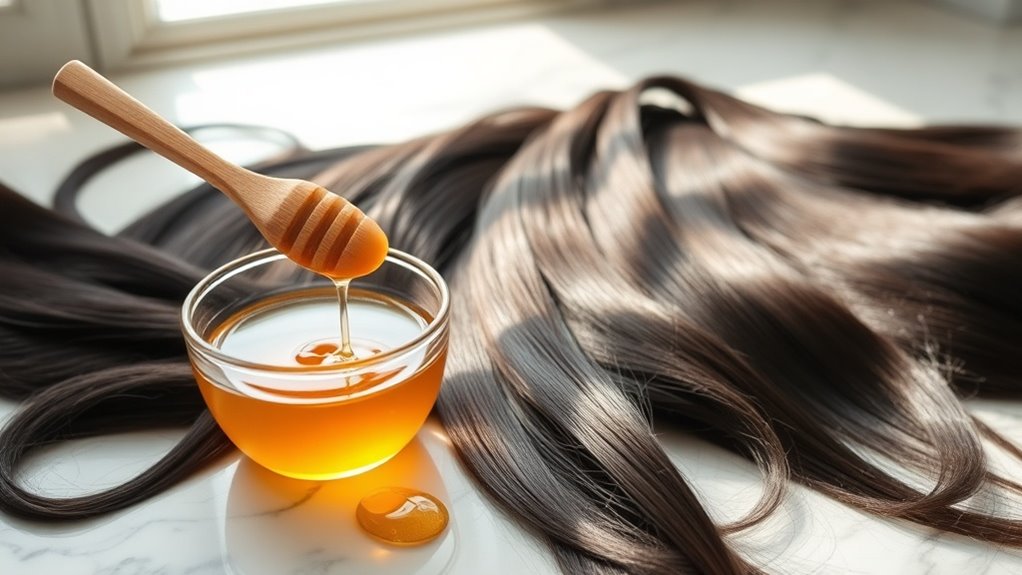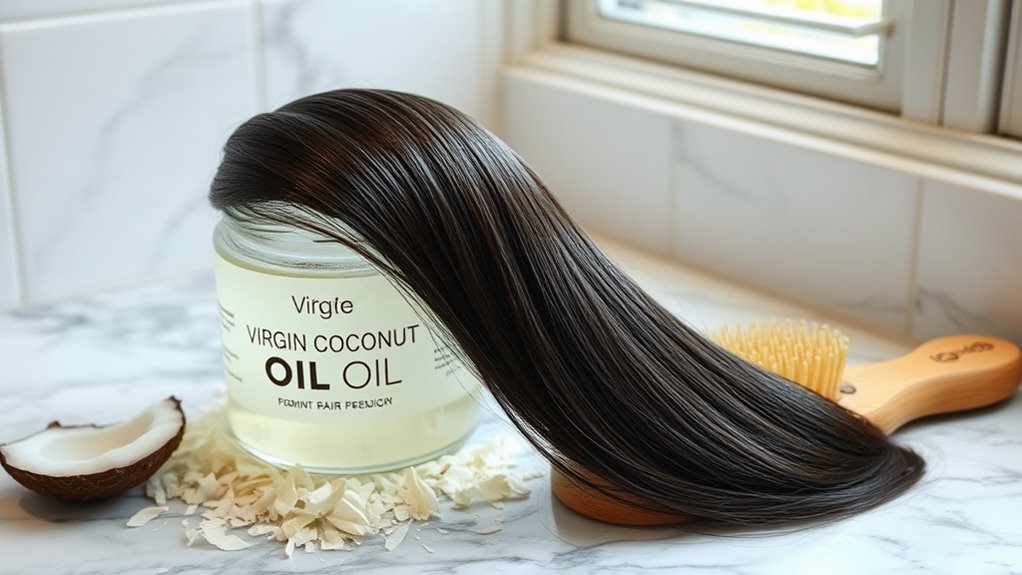Coconut Oil Hair Mask You Can Whip Up in Minutes
You’ve probably tried dozens of hair treatments, but there’s a reason coconut oil remains a beauty staple in countless cultures. When you’re battling dry, damaged, or lackluster locks, this natural ingredient works wonders by penetrating deep into your hair shaft – something most commercial products can’t achieve. With just a few kitchen ingredients and 30 minutes of your time, you’ll discover why this ancient beauty secret has stood the test of time.
The Science Behind Coconut Oil’s Hair Benefits
While many natural oils can benefit your hair, coconut oil stands out due to its unique molecular structure and composition. Its low molecular weight and straight linear chain allow it to penetrate deep into your hair shaft, rather than just coating the surface.
This penetrating action makes coconut oil hair masks particularly effective at preventing protein loss and reducing damage. Unlike other oils, coconut oil’s lauric acid content matches your hair’s natural protein structure, helping rebuild and strengthen damaged strands from within. It’s also rich in antimicrobial properties that help maintain a healthy scalp environment while nourishing your hair follicles. Additionally, regular use of coconut oil can enhance nutrient absorption, promoting healthier hair growth and overall scalp health.
Essential Ingredients for Your DIY Hair Mask
Although coconut oil alone can work wonders for your hair, combining it with other natural ingredients can enhance its restorative properties. You’ll want to gather these essential additions to create a potent hair treatment that addresses multiple concerns simultaneously:
- Raw honey – adds moisture and antimicrobial properties
- Avocado – provides vitamin E and healthy fats for deep nourishment
- Apple cider vinegar – balances pH and adds shine
- Essential oils (lavender, rosemary, or tea tree) – stimulate scalp health and add fragrance
These ingredients work synergistically with coconut oil to transform dry, damaged strands into soft, manageable hair. Additionally, incorporating antioxidants found in coconut oil protects hair from environmental damage, further enhancing the benefits of your DIY mask.
Step-by-Step Mixing Instructions
Now that you’ve gathered your ingredients, let’s get started with the proper mixing technique to create your nourishing hair mask.
First, warm 3 tablespoons of coconut oil in a microwave-safe bowl for 15 seconds. Stir in 1 tablespoon of honey until well combined. Add 2 drops of lavender essential oil and mix thoroughly.
If your hair is extra dry, incorporate one beaten egg yolk into the mixture.
For the smoothest consistency, whip the ingredients with a hand mixer for 30 seconds. The mask should have a creamy, light texture that’s easy to apply. Coconut oil’s high lauric acid content helps the mask deeply penetrate your hair shafts, enhancing its effectiveness.
Your DIY hair mask is now ready for application.
How to Apply the Mask Properly
Proper application of your coconut oil hair mask begins with slightly damp, clean hair to maximize absorption. For best results, follow these essential steps:
-
Section your hair into four manageable parts using clips, ensuring even distribution of the mask from roots to ends.
-
Work the mask through each section with your fingers, focusing extra product on damaged or dry areas.
-
Gently massage your scalp in circular motions for 3-5 minutes to stimulate blood flow.
-
Twist hair into a loose bun and cover with a shower cap or warm towel to lock in heat. Additionally, consider that coconut oil’s deep penetration provides essential moisture to repair damage, making your hair more resilient.
Tips for Maximum Hair Treatment Results
To maximize the benefits of your coconut oil hair mask, timing and technique play crucial roles in the treatment process. Leave the mask on for at least 30 minutes, though overnight treatment yields the best results.
Don’t skimp on oil coverage – make certain every strand is coated from root to tip. Always apply the mask to slightly damp hair, as this helps with absorption. Daily application of virgin coconut oil is an effective way to improve hair health. Choose treatment days when you won’t need to style your hair immediately.
Use a shower cap to prevent mess and lock in warmth. For extremely damaged hair, repeat the treatment twice weekly until you achieve desired results.
Best Hair Types and Common Variations
While coconut oil works wonders for most hair types, it’s particularly beneficial for those with dry, damaged, or chemically treated hair.
You’ll find it especially effective if your hair falls into these categories:
-
Medium to thick hair textures that need deep penetration and intense moisture
-
Color-treated or bleached hair requiring protein reinforcement and cuticle repair
-
Naturally coarse or curly hair that’s prone to frizz and breakage
-
Heat-styled hair showing signs of damage and split ends
If you have fine or oily hair, consider using less oil or limiting treatments to once weekly to avoid weighing down your strands.
